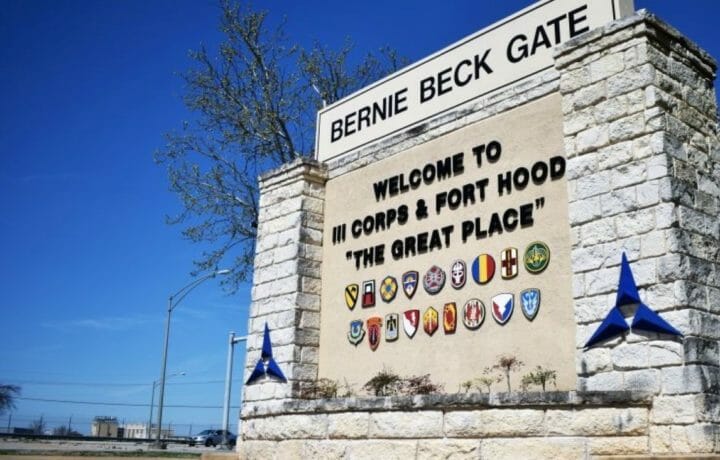While speaking at Fort Bragg, NC, on Tuesday, President Donald Trump announced that seven United States Army bases whose names were changed in 2023 will revert to their original names. The facilities had been named for Confederate military leaders and were changed during the Biden administration.
Two other bases have already seen their names revert, albeit with what may be seen as a compromise. According to CNN, reverting the base names to the original Confederate namesakes would require congressional approval. Thus, additional compromises are being made.
Bragg and Bennett Are Already Back
Fort Bragg was among the bases that saw the original change, with it being renamed to Fort Liberty. However, Secretary of Defense Pete Hegseth, who was with Trump on Tuesday, signed an order restoring the name in February, while also authorizing Fort Moore to revert to its original name, Fort Benning.
As previously reported, those name restorations came with a small caveat. Each was named for a different soldier who had the same last name.
Thus, instead of being named for North Carolinian Confederate General Braxton Bragg, who had previously served in the United States Army during the Mexican-American War, Fort Bragg is now named to honor Private First Class Roland L. Bragg.
Likewise, Fort Benning is now named for United States Army Corporal Fred G. Benning, a veteran of World War I, rather than the Confederate General Henry L. Benning.
Other Name Changes
The seven other bases will revert to their respective former names, but as with Bragg and Benning, to honor a different soldier.
Fort Gordon, GA, was initially named after Confederate General John Brown Gordon, before being renamed in 2023 to Fort Eisenhower in honor of President Dwight Eisenhower. It will now honor Master Sgt. Gary I. Gordon, a Medal of Honor recipient who fought in Somalia.
Instead of being named for Confederate Ambrose Powell Hill, Fort Walker, named for Dr. Mary Walker, the U.S. Army’s first female surgeon, will honor three Civil War Medal of Honor recipients, Lt. Col. Edward Hill, 1st Sgt. Robert A. Pinn and Pvt. Bruce Anderson.
Fort Hood, TX, was named for Confederate General John Bell Hood before being renamed to Fort Cavazos after General Richard Cavazos. It will now honor a World War I hero, Col. Robert B. Hood.
Fort Lee, VA, was named to honor Confederate Gen. Robert E. Lee and was renamed in 2023 to Fort Gregg-Adams after Lt. Gen. Arthur Gregg and Lt. Col. Charity Adams, who led the first all-female Black unit of the Army deployed in World War II. It will now honor Pvt. Fitz Lee, who earned the Medal of Honor for heroism during the Spanish-American War.
Originally named for Confederate George Edward Pickett, Fort Pickett, VA, was renamed in 2023 to Fort Barfoot after Tech. Sgt. Van T. Barfoot, a World War II Medal of Honor recipient. It will now honor 1st. Lt. Vernon W. Pickett, a Distinguished Service Cross winner, who was killed in action during World War II.
Fort Polk, LA, was named after Confederate General Leonidas Polk until it was renamed in 2023 to Fort Johnson after Sergeant William Henry Johnson, an African-American Medal of Honor recipient who served in World War I. It will now be named for Gen. James H. Polk, a World War II officer who later commanded U.S. Army Europe.
Fort Rucker, AL, was originally named for Confederate Edmund Winchester Rucker, but was later renamed to honor Fort Novosel after Chief Warrant Officer 4 Michael J. Novosel, Sr., a Medal of Honor recipient who served in World War II and Vietnam. It will now be named for WWI aviator Capt. Edward W. Rucker, who earned the Distinguished Service Cross for his service.
Renaming the U.S. Army bases reportedly cost around $21 million, as the process required removing the old names from all base street signs and updating everything from recycling bin decals to business cards. It is unclear how much the additional name changes will cost.




